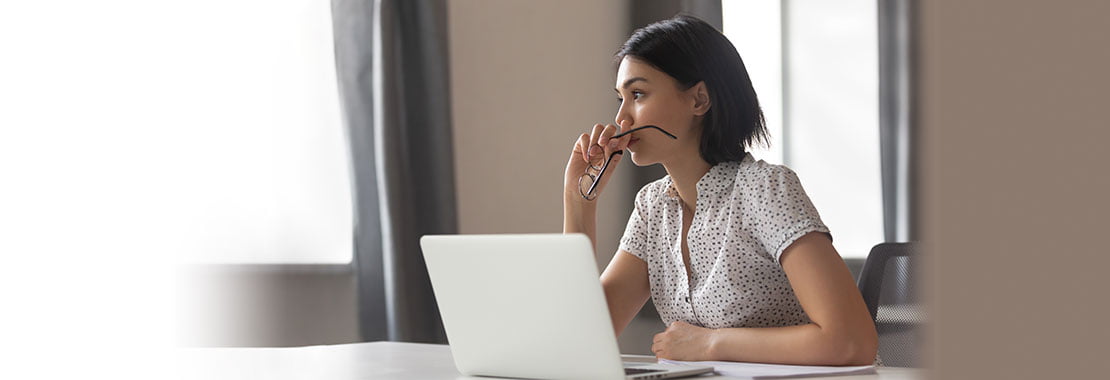Janet Mizrahi is a continuing lecturer of professional writing at the University of California, Santa Barbara. She is also an author at BizCommBuzz.
I was brought into the cult of self-reflection kicking and screaming. I did not want to take time away from teaching course content so students could reflect upon course content. But I had a boss who continually preached reflection, metacognition, and transfer, and finally I began to see why. Now, like any convert, I am a disciple and include reflection in nearly every assignment because I have seen the positive results.
Self-reflection in learning means examining the way an individual learns. It implies that without thinking deeply about how we learn, we can never gain the insight necessary to correct poor habits and affirm good ones. This cognitive process of self-reflection therefore not only helps students improve learning outcomes, but fosters self-regulated learning, a cyclical process that involves planning to complete an academic task; using strategies to monitor progress; evaluating the outcome; and using that knowledge to guide future tasks.
One of the things I like most about reflections and self-regulated learning is that together, they help place the responsibility for learning squarely onto students. By asking them to think about what they could have done to improve their learning experience, they are forced to evaluate why waiting until the last minute to write a 10-page report did not yield their desired grade. Prodding students to think about what and how they have learned encourages them to consider learning objectives and their own part in developing knowledge.
Since I started using reflections, I have noted several positive outcomes:
- I find that students accept my comments and critiques of their work and their grades without complaint, and I believe this is directly tied to the process of self-reflection
- The act of critically examining their process and work product moves the focus away from a grade to what they’ve learned
- Students are generally more aware of their work’s imperfections and that I am their mentor rather than their nemesis
It’s not easy for young people today to hear they’ve done something wrong, but it is my job to show them the correct way to write a business proposal or an email, for that matter. Before I used reflections, many students simply could not accept that their work could be less than perfect. That has definitely changed.
Reflections—with their inherent focus on the process of learning—can be especially appropriate at the end of the term, when we naturally want to bring students back to course objectives as they evaluate the course and what they have taken from it. At this point of the learning process, reflections encourage students to analyze what they’ve gained overall. [I’ve included some of the prompts I use at the end of this post.]
However, we can inject self-reflection into our classrooms in a number of ways at any time during the semester:
Discuss and Explain Reflection
Talk about why reflection is important and how it makes students into better learners not just in school but in life. Repeat the importance of reflection regularly during the course. You can even toss in a bit of Socrates: “The unexamined life is not worth living,” most certainly wasn’t intended to apply to 21st century college students, but I think it works in this context.
Assign Reflections During Class Time
I have found that providing time during class for students to complete reflections on specific assignments yields better results. When students complete reflections at home, they have the tendency to dash them off without much thought. But in class, everyone is working on the same task, and I’m nosing around to make sure they stay on task. I also require students to turn in their reflections with their assignments and take points off if they are missing.
Accept Different Reflection Modalities
Some instructors leave the reflection modality up to the student. They accept video or audio responses from individuals, duos or triads and allow students to complete the reflection on their own time. As a writing instructor, it makes sense for me to use a written form for student reflections, but whichever model works for your field and class situation is the one to use. There is no wrong way to do this.
My Classroom Strategy
In my classes, I provide prompts for students to follow rather than allowing a free-floating brainstorm. Below are some of the questions I typically pose.
- Explain your experience completing [X] and what you learned about tackling projects like this. This prompt can prod students to see where they went wrong.
- What might you change about the way you approached [X] the next time you have a similar assignment? This question leads students to think about how they’ll change what they did to yield a better outcome in the future.
- What do you know about [X] now that you did not know before completing the assignment? The response this elicits draws attention to the learner’s net gain and provides a sense of accomplishment.
- What aspects of the assignment would you like me to focus on so I can provide better feedback? This probe helps students analyze what they think they need to work on and makes them more open to critiques.
In the end, self-reflection helps our students. But it also helps instructors see what our students believe they have learned—a win-win.
Want More Insights Like These?
Check out Janet’s additional articles packed with useful experience, tips and tricks you can incorporate into your own instruction.




